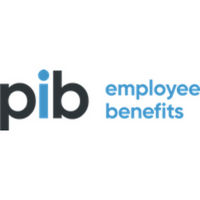Group risk insurance: are you making the most of your value-add mental health tools?

How have mental health tools evolved?
The landscape of mental health and wellbeing support within employee benefits has changed over the past few years. An employee assistance programme (EAP) and other similar services were once considered by employers to be subsidiaries of income protection insurance (IPI), and were often viewed simply as a tick-box exercise. Our experience of today’s market however shows a very different perspective.
An EAP is now considered a high priority for employers, and an offering which is greatly valued by staff. Discussions around mental health and wellbeing no longer carry a taboo, and this shift in the use of an EAP is due in part to a recognition of the importance of employee wellbeing. It’s also partly due to the digital evolution of benefits which has occurred in recent years.
Digital solutions such as portals or company intranet systems enable employees to browse their range of benefits confidentially, and more importantly, choose additional benefits to suit their lifestyle. Portals also allow some personalisation, which means employers can customise the promotions and information for the individual user, rather than offering one blanket approach for their entire team. Digital portals have changed the way employees perceive and even value their benefits.
What issues do employers face in the delivery of benefits?
In response to the new facilitation of choice for employees, insurers now also offer more options than ever. There are now a vast number of services available within group risk products, however there are also numerous cross-overs with several services essentially offering the same thing. This can often mean that employers are actually paying for products they don’t need. For example, many services which were solely an element of private medical insurance (PMI), are now offered as part of IPI, such as digital GP appointments or second opinion services.
With a wider number of additional services available within an employee benefits scheme, this presents the question of how organisations communicate and promote these benefits. Poor communication is one of the primary ways in which employers can lose the impact of their employee benefits scheme. Although our experience has shown us that employees generally favour choice within their benefits package, bombarding individuals with every option available can actually have a negative effect on an employee’s engagement with their benefits programme.
A common mistake by employers is presenting staff with an entire range of benefits options, many of which can be difficult to understand. This often leaves people feeling overwhelmed, and ultimately switched off. Instead we have found that focusing on choice elements at the right time can have a greater impact. In some cases, a more consolidated approach to the entire benefits scheme is favoured, in the form of one or two key elements which cover employees’ key needs and concerns.
What should employers focus on going forward?
As we move into a new phase of the pandemic, for many people this brings with it new fears and anxieties which employers will need to address. There is now a variability within the working population today, as a number of people have received all or part of their vaccine, whilst there are still a great number of younger people who have yet to do so. The commonality which was shared during the first lockdown has somewhat eroded, and people are now at very different stages of returning to normal life.
Likewise, the causes of stress and anxieties during the Covid-19 pandemic are also varied. Many people are still concerned about returning to the workplace or using public transport, out of fear of the spread of Covid-19. However as the pandemic has progressed, financial concerns have also become one of the biggest causes of mental health issues.
It’s vital that employers understand how mental health tools can help to properly support employees through the next step towards normality. An EAP is no longer a basic answer to a tick-box exercise, it can facilitate the use of services which would once have only been accessible via PMI:
- Counselling is one way in which an EAP can benefit somebody experiencing mental health issues, and recently we have seen that providers have expanded their offering from a maximum of six sessions to 10. A number which can possibly be reset should the individual present with a separate issue.
- Digital GP appointments and second opinion services have also been in demand. As the NHS has suffered throughout the pandemic, being able to contact a GP remotely, or get a second opinion should that not feel sufficient, can be a great relief.
- Financial education and advice services can be a great help to those experiencing financial stress. Ranging from debt advice and consolidation, to simple money management skills. Support around finding the right banking options or even the right broadband provider can also be offered.
- Legal advice can also be provided, for example, many renters have experienced concerns around eviction, these types of services can help employees to understand their rights.
The theory around wellbeing remains that providing employees with the support they need means that everybody wins. By providing a well-rounded programme which supports people’s mental and physical wellbeing, it means fewer claims for providers, smaller premiums and a more productive workforce for employers, and a better quality of life for staff.
This article is provided by PIB Employee Benefits.
Supplied by REBA Associate Member, PIB Employee Benefits
PIB Employee Benefits is a forward-thinking consulting business.







